Hydroponics is a viable option for the culture and cultivation of almost every vegetable out there.
If you aren’t already acquainted with the concept of hydroponics, it is the process of growing crops or individual plants in an aqueous medium.
Instead of growing your plant in a garden bed, you could grow it in a water medium instead.
Hydroponic cultivation has its benefits. For example, the water medium does not cause any friction trauma to the roots of seedlings if you are planning to replant a plant after it has grown a little.
Besides, hydroponics takes up less area, and with the need for a soil medium gone, it practically reduces the required effort quotient to a minimum!
It reduces wastefulness by almost doubling the efficiency of water utilization in your garden.
While you could culture almost every vegetable this way, I understand that taking the first step or deciding on what to grow can be a confusing experience.
Here is a list of the most viable vegetables that you could grow hydroponically. I hope this gives you the push you need to set up your veggie garden!
Which are the best vegetables for hydroponic culture?
- Celery
- Lettuce
- Beans
- Bell peppers
- Tomatoes
- Peas
- Zucchini
- Spinach
- Broccoli
- Cucumbers
- Radishes
- Kale
- Beet
- Chard
- Spring Onions
1. Celery
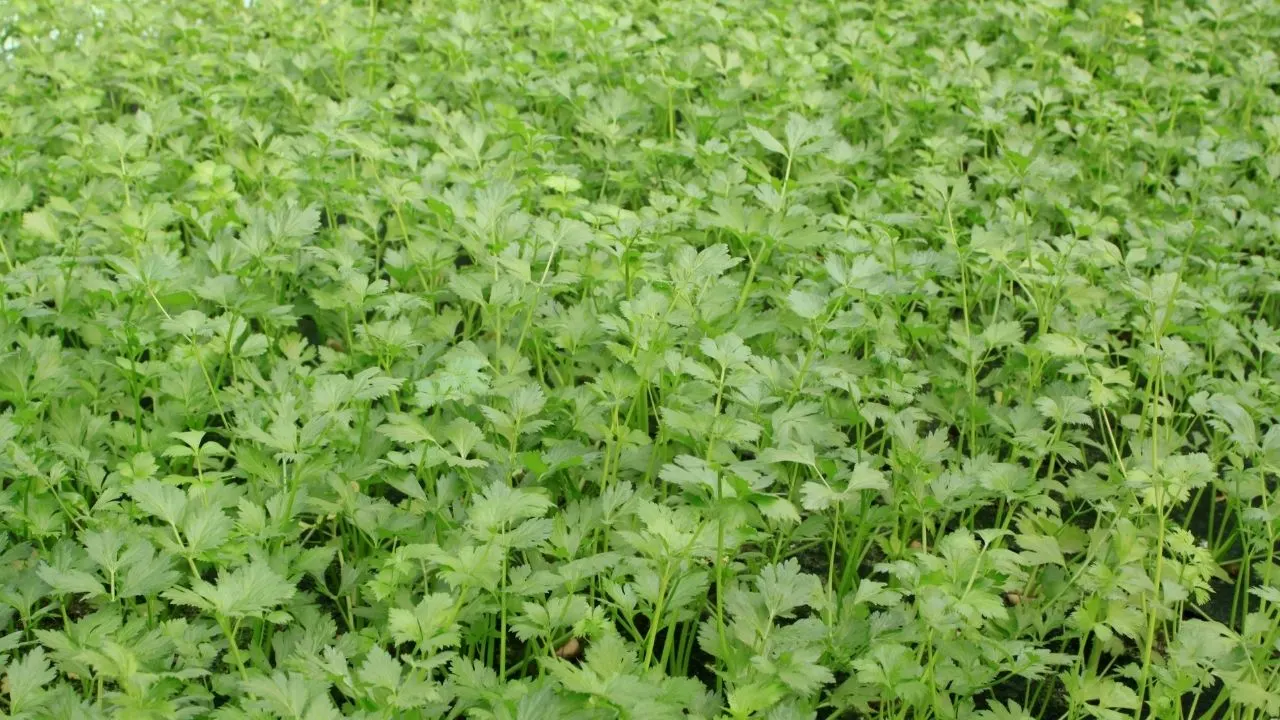
Hydroponics is considered to be one of the best options, if not the best when it comes to growing your greens at home.
Hydroponic cultivation increases nutrient absorption of a plant, so your vegetables will come with some added goodness if you pick them straight out of your hydroponic garden!
Vegetables that typically find their place in salad bowls are my choicest picks for hydroponic cultivation, and celery makes the first spot on that list!
The characteristic that makes these greens most suitable for hydroponics is their temperature requirement during growth.
Celery grows best in cooler temperatures of 15 to 7 degrees Fahrenheit (15 to 23 degrees Celsius), so we can rule out high warmth altogether.
At the same time, extremely cold temperatures would not be desirable. In comparison to other vegetables, celery takes longer to grow hydroponically— almost 140 days.
When you go in with the planting, just make sure that you plant them approximately 4-5 inches (10-12 cm) apart.
That way, it will be easier for you to pick out the tender leaves and shoots for your salad— two-month-old shoots would be a perfect pick).
2. Lettuce

If celery is here, could lettuce be far behind? I don’t think so!
Lettuce is much like celery in terms of growing conditions and utility, so it is quite a popular pick for hydroponic cultivation.
Lettuce comes in several varieties, and picking the one that will be the best suited for hydroponics is the trickiest part.
For example, if you are the kind of person who prefers a caesar salad, you should go for the Romaine variety.
On the other hand, if you are looking for foliage lettuce, you have to go for varieties like Salad Bowl unless you have your eyes set on the more popular Boston or New York types.
Lettuce needs temperatures ranging between 50-70 degrees Fahrenheit (10-20 degrees Celsius) to grow properly and in a medium with a pH value of 5.5 to 6.0.
Avoid high temperatures as they might just ruin your crop. Try to maintain temperatures within the range above.
Besides, lettuce requires plenty of Nitrogen to grow strong, so remember to use a hydroponics nutrient solution that will cater to its high nitrogen demands.
Much like Celery, leaving about 4 inches (10cm) between two consecutive individual stalks will make it easier for you to pick the leaves for your meal!
3. Beans

You can easily grow hydroponic beans inside your house, as well as outdoors.
All types of beans can be grown hydroponically— green beans, pole beans, lima beans, pinto beans, bush beans, etc.
Bush beans grow very well indoors, and if this is the variety you are going with, you will have your winter effectively occupied!
Bush beans grow best in cool and sheltered environments, making them a natural choice if you are looking for vegetables to grow hydroponically.
They tend to take up a wider area when they grow, so accommodating that during cultivation would be one of your responsibilities.
Beans germinate anytime between 1 to 2 weeks, as they germinate very quickly.
Bush beans are in no way demanding, but hydroponics automatically involves paying particular attention to your plant’s nutritional needs, right?
Make sure to plant them 2-4 inches (5-10 cm) apart and keep them in temperatures no exceeding 65 degrees Fahrenheit (18 degrees Celsius) and not below 60 degrees Fahrenheit (16 degrees Celsius).
On that line, bush beans require certain minerals to be sufficiently fed. Make sure that you give them plenty of potassium and phosphorus.
When you pick out a hydroponics nutrient solution for bush beans, you could also go for something that has a high sulfur content.
4. Bell peppers

Next on this list will be one of my favorite vegetable groups: bell peppers.
I love the flavor and aroma that bell peppers bring to the table, and what makes them more incredible is that they are ideally suited for hydroponics, too!
Green, red, and yellow bell peppers— you could consider all of them for hydroponic cultivation.
If you cultivate them indoors, keep in mind that they require a warm setting, you can use a heating pad if you can invest in one.
Or you could cultivate them outdoors, where they will receive tons of sunlight, which will go a long way in stimulating their healthy growth
To see them germinate within 1-2 weeks, you will have to maintain a temperature of at least 80 degrees Fahrenheit (26 degrees Celsius).
Bell peppers require support to produce good bell peppers, depending on the variety.
DWC and dutch bucket systems are some of the suggested Hydroponic systems for growing your bell pepper plant.
Of course, these are vegetables that will consume some space. I would suggest planting them about 6 inches (15 cm) away from each other to make sure they aren’t cramped.
That should be enough for you to enjoy fresh peppers to put in your recipes once they mature enough!
5. Tomatoes
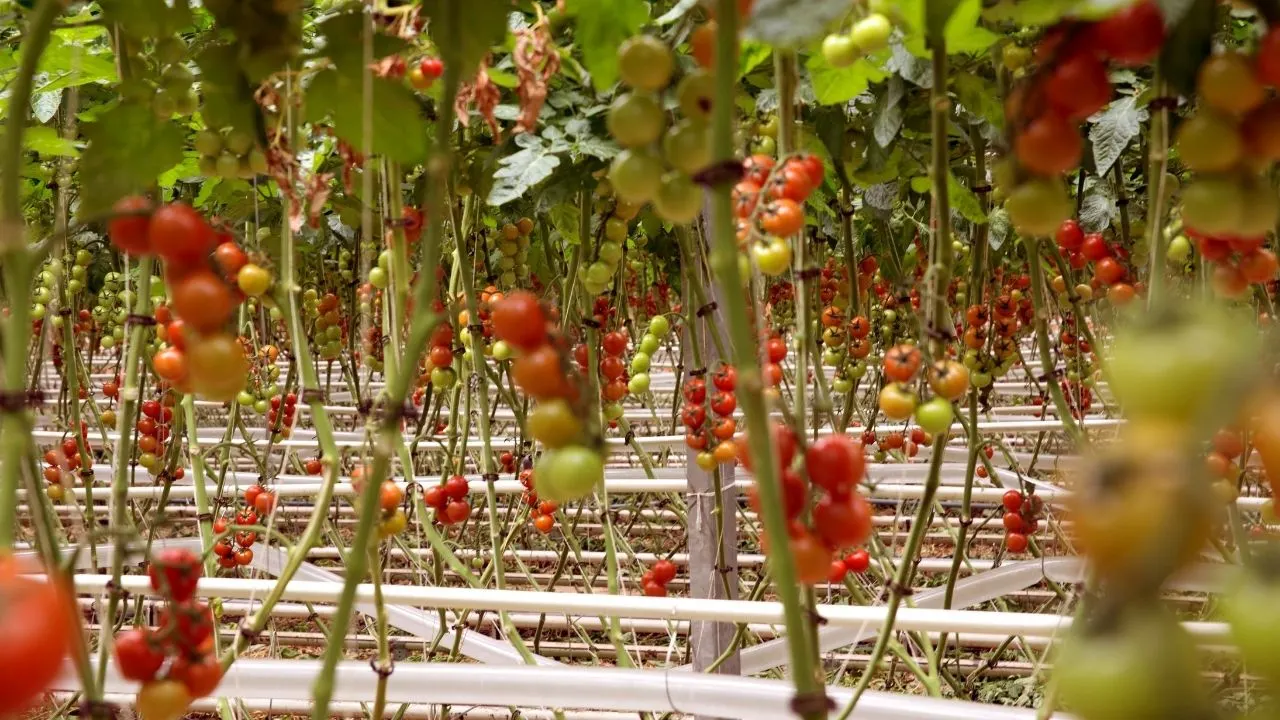
Tomatoes are one of the best options for hydroponics, among all the vegetables we consume regularly. An added factor is that they are delicious and brimming over with nutritional goodness!
The bush variety of tomatoes is, in my opinion, the best suited for this purpose. Using saplings make for a perfect fit in a hydroponic system.
You can grow them indoors without compromising with their brightness or warmth requirements, so that makes them a more convenient option.
Growing tomatoes indoors is advisable to avoid pest contamination. Do not use outdoor saplings or seeds for indoor plantations if you want to avoid contamination issues.
Keep the seeds or saplings in a wet medium and keep the seeds moist. The average temperature should not exceed 77 degrees Fahrenheit (25 degrees Celsius).
Within 10 days you should see sprouting, then you can transfer it to your preferred Hydroponic system.
Provide the plant with adequate light, preferably 18 hours a day.
You should plant the tomato seeds sometime in late winter or early spring. That should allow the tomatoes to mature enough by April or May to shift them outdoors.
After that, you could bring them back indoors towards the end of summer.
Read more about German Queen Tomatoes.
6. Peas
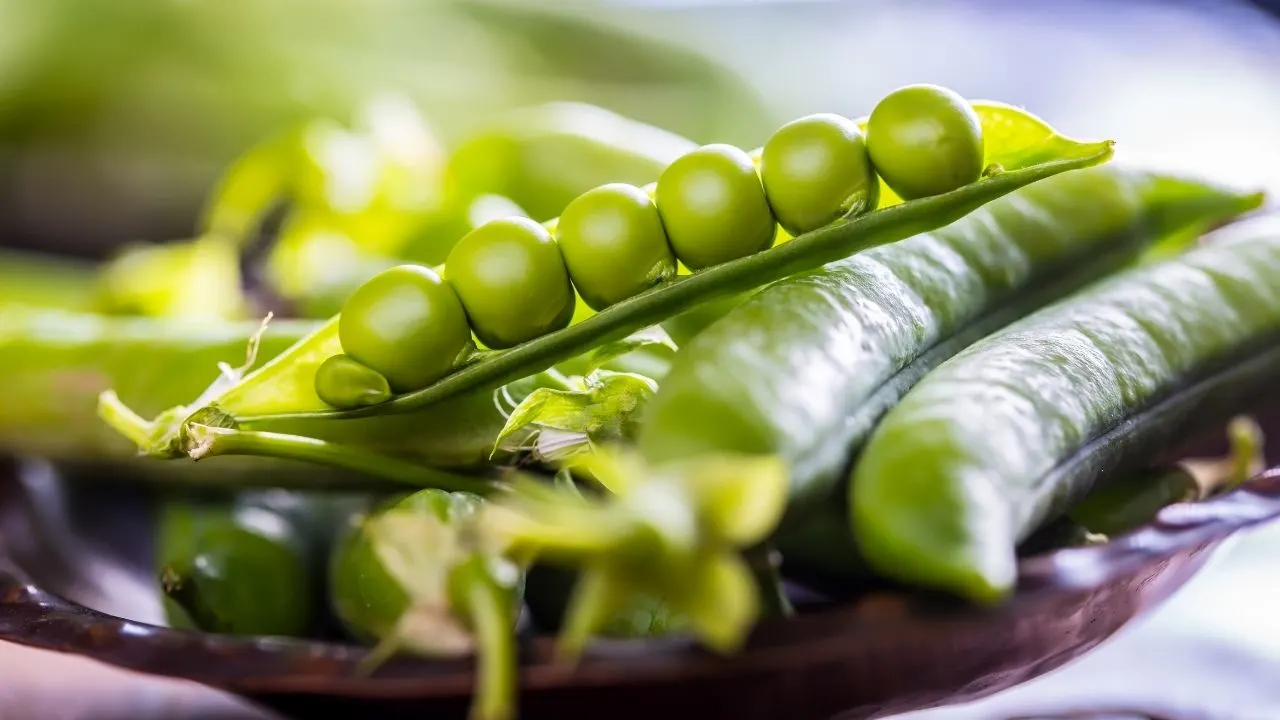
You can grow almost all kinds of peas hydroponically. Speaking as someone who really appreciates their flavor, I think that growing peas at home would be excellent, so I will suggest that you give this a shot.
Growing peas hydroponically is best suited with the Deep Water Culture(DWC) method and mature within 8 weeks.
Peas tend to prefer cooler growing conditions, so make sure that you grow and preserve at a low temperature.
Peas germinate within 7-14 days (given the seeds are pre-soaked) in an ideal temperature setting of 55-65 degrees Fahrenheit (12-18 degrees Celsius).
Snow peas such as Mammoth Melting Sugar and Oregon Giant Pod are ideally suited for Hydroponic cultivation, but you could also go for Sugar peas such as Dwarf Grey Sugar, Snowflake, and Snowbird.
7. Zucchini
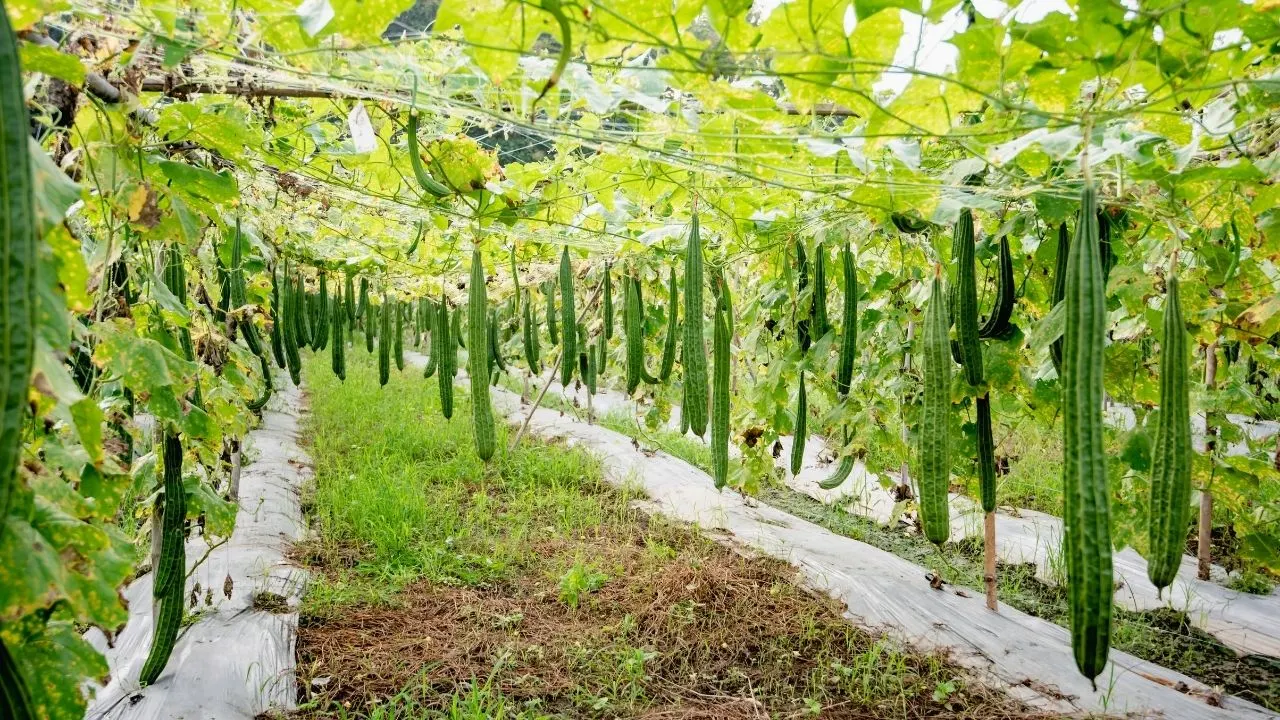
Zucchini is typically cultured in greenhouses, but arranging for a greenhouse setup is obviously out of the question for some home gardening.
Don’t worry! Zucchini will develop wonderfully through hydroponics inside your home. The likes of zucchini is often considered to be the favorites of hydroponics enthusiasts.
These will thrive under warm conditions. If you can arrange for the temperature to be on the high side, your plants are going to thank you!
And you must remember—tons of brightness will be pivotal for you to get perfectly healthy zucchini, so don’t worry even if they are exposed to direct sunlight.
Zucchini tends to grow large, so if you could arrange for them to grow at least 8-9 inches (20-22cm) apart.
That way, you will be making sure that your vegetables have enough space to grow without having to infringe on their neighbor’s breathing space!
8. Spinach
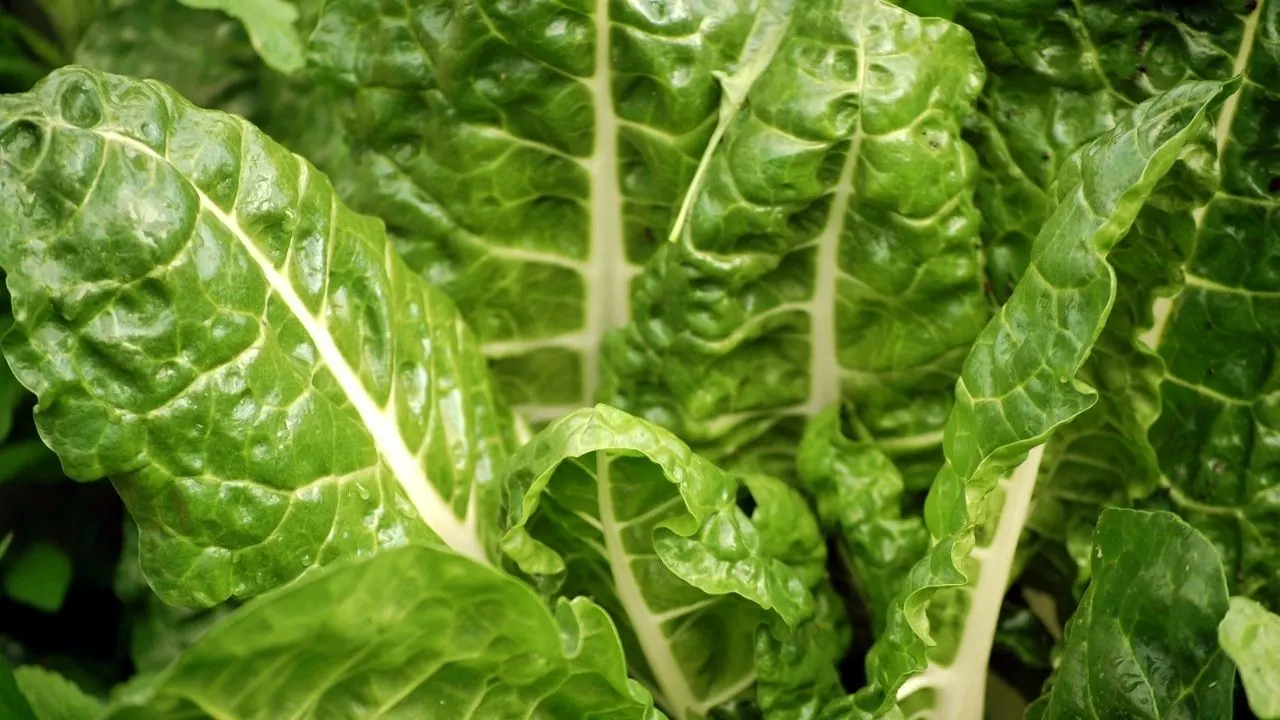
Talking about antioxidants and vitamins, this brings me to the next option on my list, spinach. Spinach is rich in most vitamins and minerals, and its health benefits alone should be enough to pique your interest in its cultivation.
Hydroponic Spinach requires more care in terms of controlling temperature, maintaining moisture, and using fertilizers.
Try to maintain a temperature between 65-70 degrees Fahrenheit (18-21 degrees Celsius) during the day and not more than 65 degrees Fahrenheit (18 degrees Celsius) during the night as spinach does not do well in high temperatures.
Using fresh spinach seeds and keeping the spinach seeds moist amplifies the germination rate. Do not overuse fertilizer on your spinach else, the leaves will burn.
No matter how you look at it, spinach is an absolute must-have for your hydroponic vegetable garden.
If you haven’t realized it yet, leafy green vegetables are arguably the best picks if you are looking for veggies to cultivate hydroponically. And spinach is no exception.
It grows quickly and continues to grow steadily if you provide it with the right conditions. You can harvest as swiftly and as many times as you want because, as a plant, it won’t abruptly die off like perennials tend to. Spinach should be one of your top considerations for your hydroponics!
Pro tip— avoid using heating pads as spinach prefers cool weather, and excessive warmth tends to turn the spinach bitter.
9. Broccoli
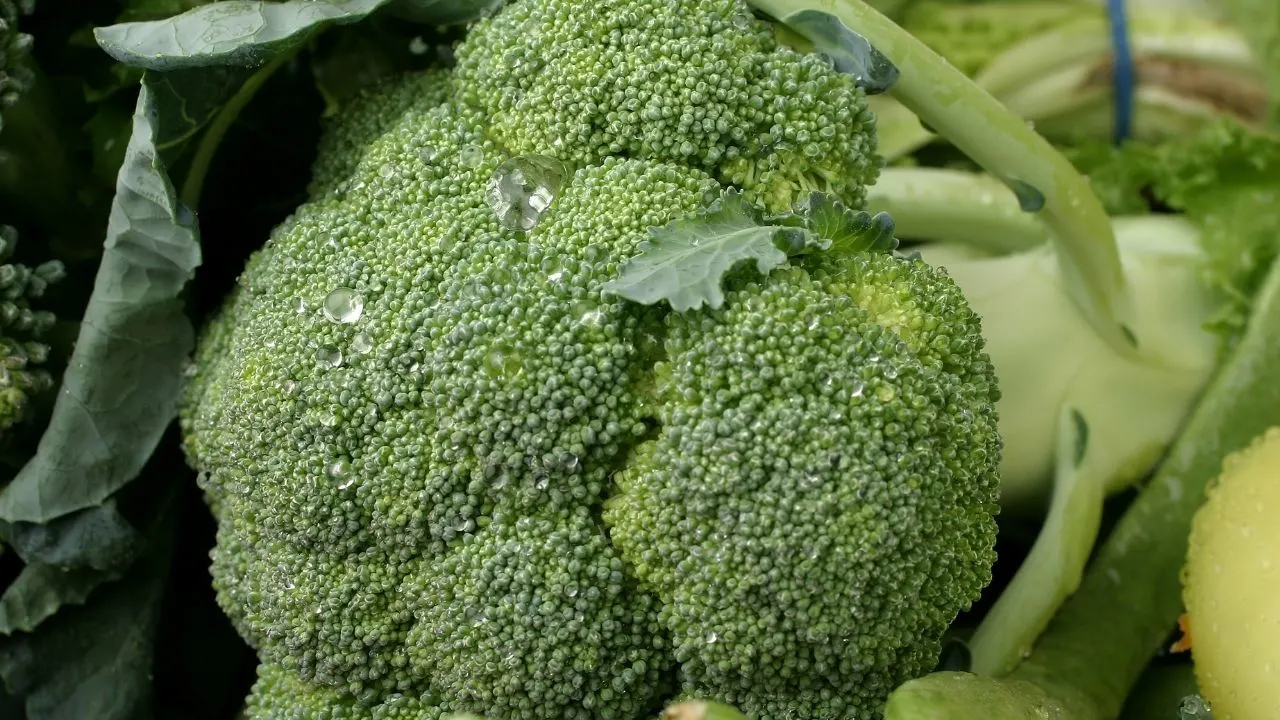
One of my absolute favorites in terms of taste and health benefits, broccoli is often taken as the ideal vegetable for hydroponic cultivation.
The most preferred variety of broccoli for hydroponic cultivation is Calabrese broccoli.
When you plant broccoli seeds, make sure you remember to keep at least 7-8 inches (7-20cm) of space in between. Give it about 7-14 days to germinate, the temperature should not be above 75 degrees Fahrenheit (23 degrees Celsius).
It has moderate light requirements, so about 15 hours of light should be just fine. LED lights work well in this case.
Broccoli tends to fare well under cool environmental conditions. Ideally, 60 degrees Fahrenheit (16 degrees Celsius) would be the preferred temperature for growth, if the temperature gets too hot, your broccoli will end up with a bitter taste.
All hydroponic systems (DWC, ebb and flow, Dutch Buckets) can be used for growing broccoli, except NFT systems are not advised.
Broccoli needs space to grow. The width of the NFT systems pipes has to be adjusted for this purpose if used anyways.
Remember to feed broccoli with a hydroponic solution rich in iron and phosphorus because those are indispensable for broccoli to grow and develop sufficiently.
10. Cucumbers
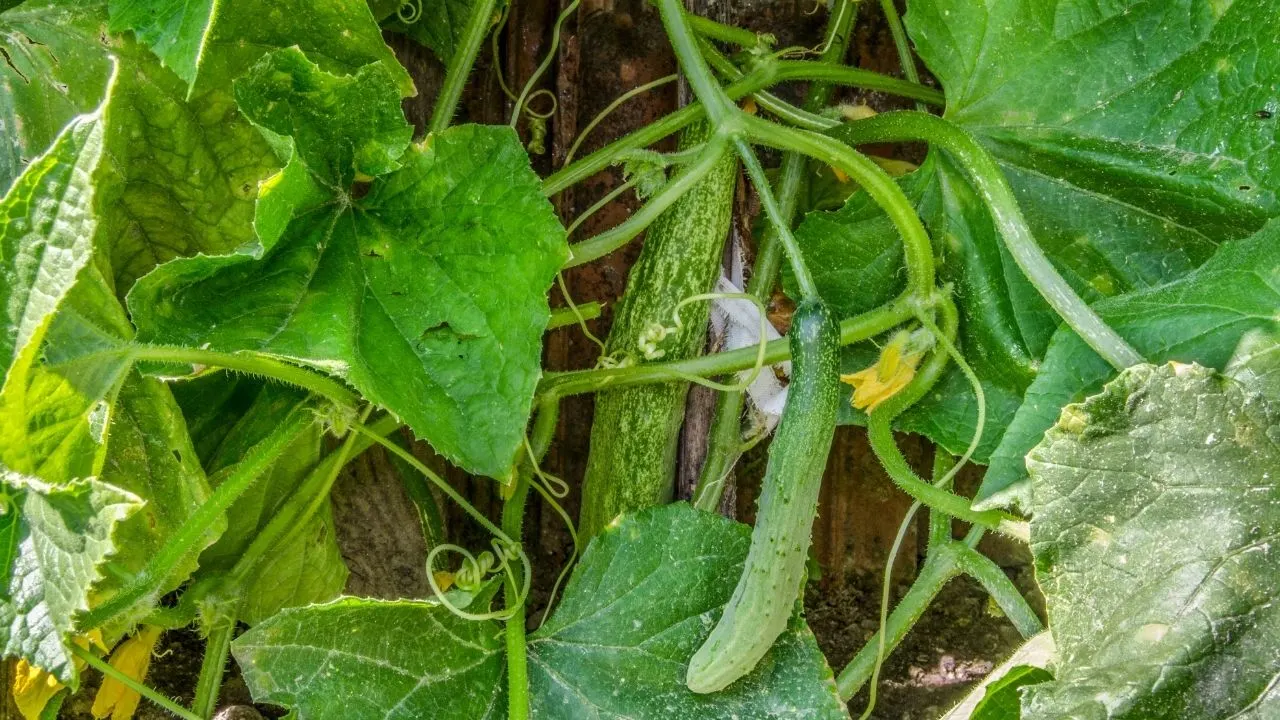
In recent years, cucumber has gained a lot of popularity in hydroponic cultivation.
Cucumbers have a lot of variety, and the best part is that almost all of them are equally well-suited for hydroponics!
You can grow any variety of cucumbers within your hydroponic system, although the hybrid ones are mostly preferred.
Deep Water Culture and Kratky hydroponic systems are preferred for indoor cultivation and you can opt for the NFT and ebb and flow method if you’re looking to grow them outdoors.
Cucumber seedlings fit well into the hydroponic system but ensure that the medium remains neither too acidic nor too basic.
The temperature should not exceed 82 degrees Fahrenheit (27 degrees Celsius) during the day and should not be below 65 degrees Fahrenheit (18 degrees Celsius) during the night.
A neutral environment will suit it best. Cucumbers love warmth and brightness, so don’t hold back from letting them bask in as much natural sunlight as it wants!
11. Radishes
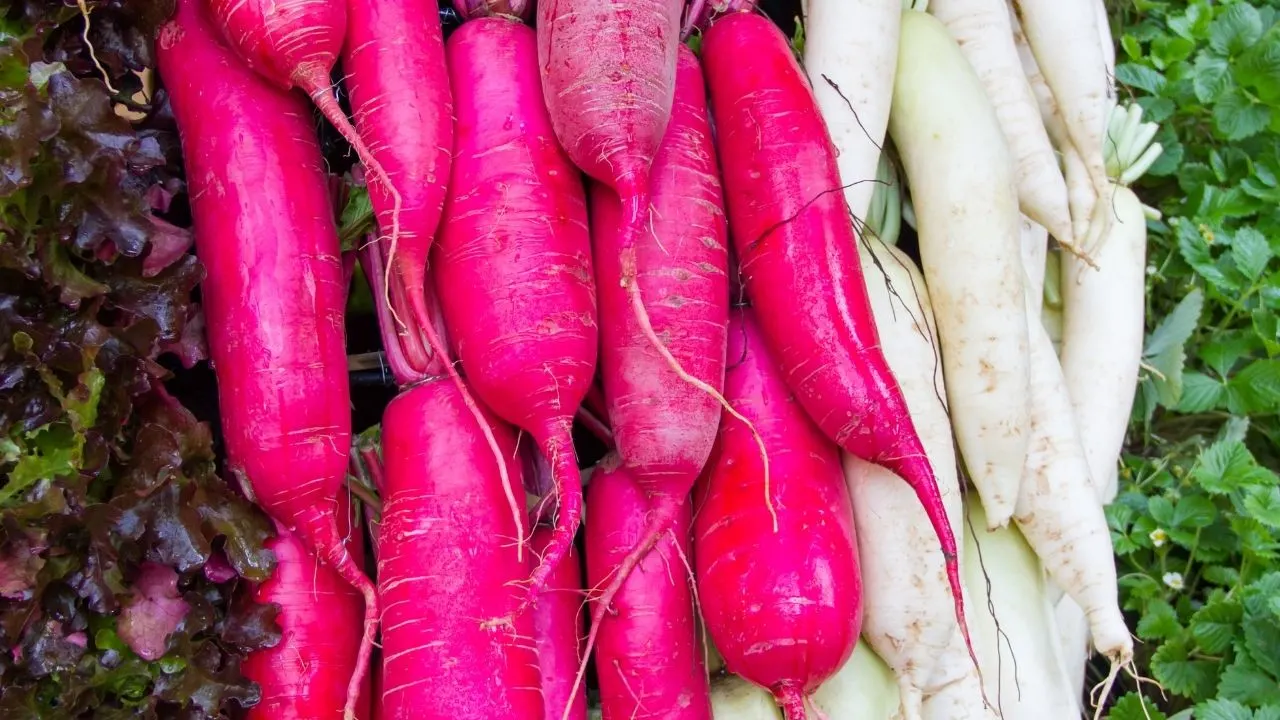
I know what you might be thinking, radish is technically the root, so there’s no way that it will survive without a solid soil medium!
You’re not wrong; most root vegetables aren’t really ideal for hydroponics when you think about it.
But radish is a little different in some regards. It is pretty suitable for hydroponic cultivation, one of the primary reasons being that it is a cool-weather crop.
Naturally, radish prefers lower temperatures, so about 50 to 80 degrees Fahrenheit (10-26 degrees Celsius) is ideal for growing radishes. But some longer varieties can tolerate a slight increase in the temperature, too.
Its brightness requirements aren’t extravagant either. It needs sunlight for just about six or eight hours a day.
Radishes belong to the category of hydroponic crops that thrive in a neutral environment. I would say that a pH level between 6 and 7 would be the ideal bracket in this case.
If you are harvesting radish hydroponically, I would suggest that you go with seeds. It is already a rapidly growing crop, so you will probably be able to harvest it within a month or so.
12. Kale
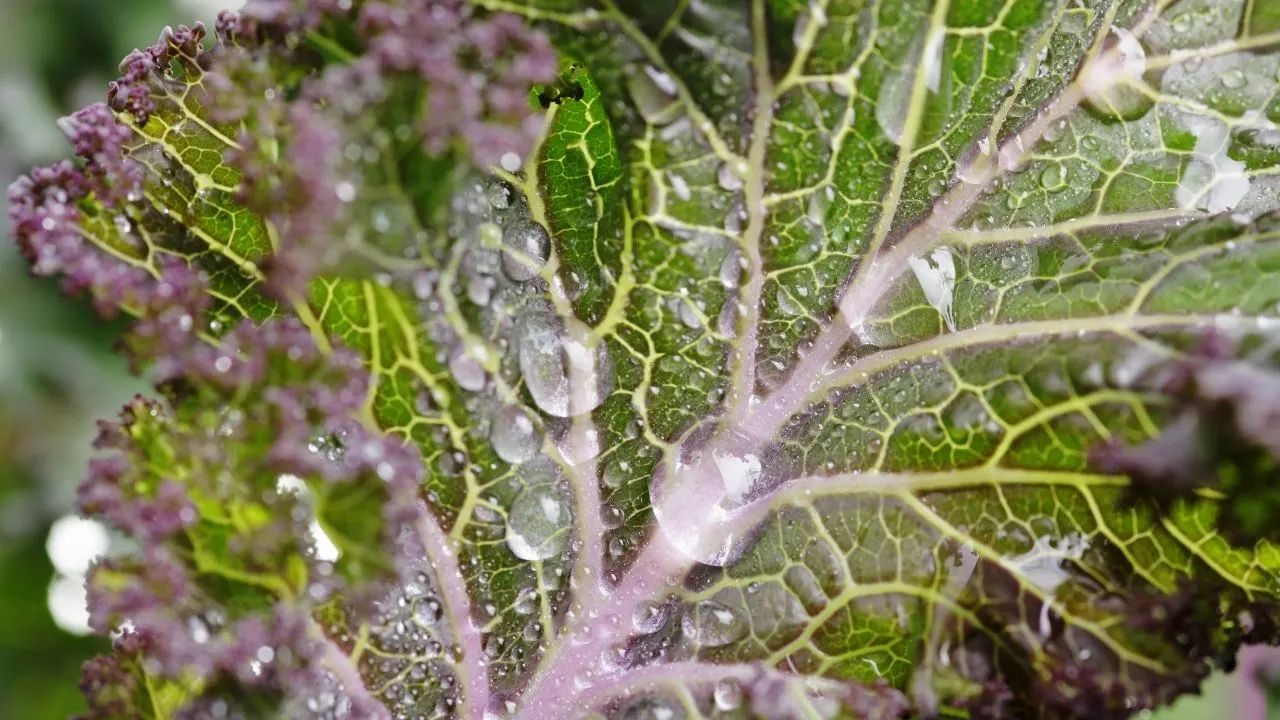
Kale is well-known for being the hot favorite of health and fitness enthusiasts and for a good reason, too!
It is not just absolutely delicious; it is also very versatile in recipes. That means that kale works in anything, right from a smoothie to a restaurant delicacy.
I’m sure that you’re already well acquainted with kale, but did you know that this vegetable is also very easy to grow hydroponically?
Kale is one of those vegetables that have been grown in an aqueous medium for years now. It thrives in a hydroponic system.
Hydroponics involving kale is simple and convenient, so you should not face off with too many troubles on the way. But if you are looking for tips, kale prefers a rather acidic growing environment.
Maintaining a pH of 5.8 or 6.3 would be ideal if you are going to cultivate it.
When you pick out a hydroponics nutrient solvent for this particular vegetable, make sure you find something that will lock the acidity of the water medium at the desired level.
Also, kale thrives in warm spaces. Giving it a growing environment with an average temperature of about 45 to 85 degrees Fahrenheit (7 to 29 degrees Celsius) would be perfect for its development.
13. Beet
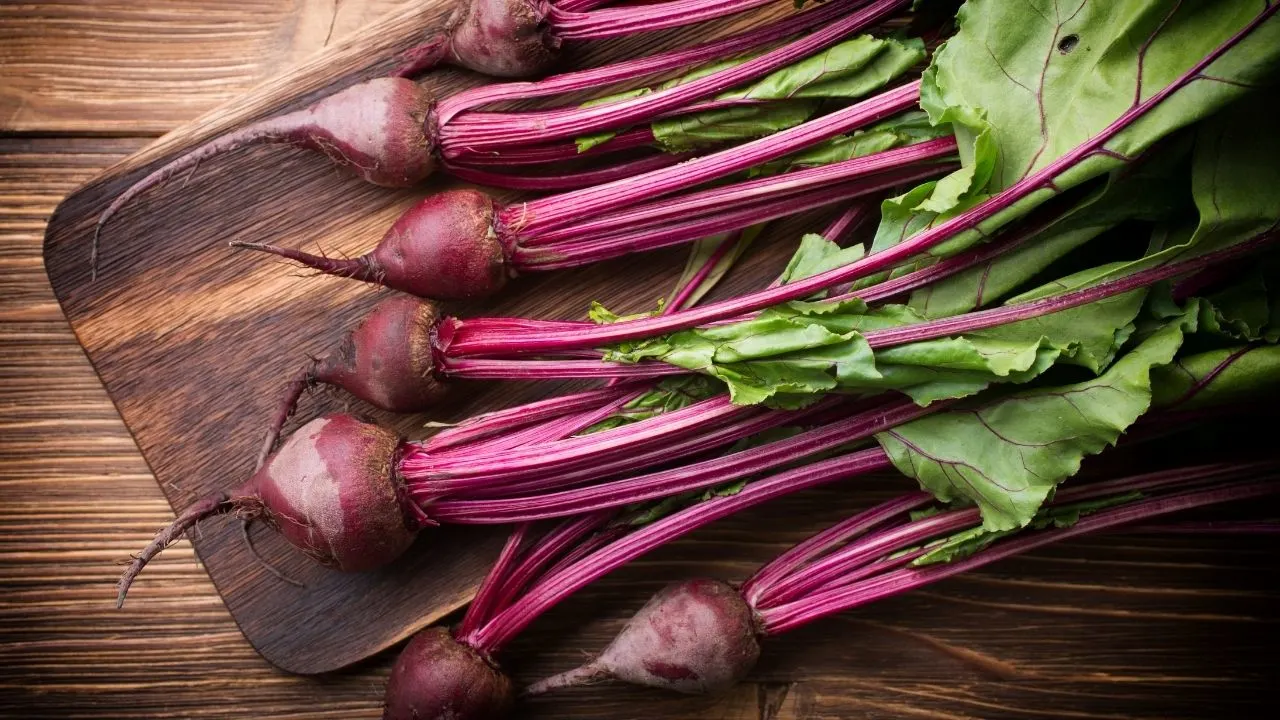
Another root vegetable that defies the odds and grows quite well hydroponically is beet.
But, with this one, you might have to take a bit more care because beetroot can be slightly prone to algae buildup in a hydroponic system.
It’s nothing to worry about, though a fundamental gravel base will be enough to deal with that problem.
Temperature requirements are quite convenient in the case of beets.
Maintaining temperatures between 55 to 75 degrees Fahrenheit (12 to 23 degrees Celsius) would be perfect, especially during the one or two-week window that the seeds will need to germinate.
Once the seeds germinate, you can transplant the seedlings to soil growing medium; just make sure you do that before the roots start to get cramped.
One tip that you can keep in mind is to grow the smaller variants of beets, even though many varieties thrive in hydroponics systems. I found the smaller ones to be more convenient to deal with.
14. Chard
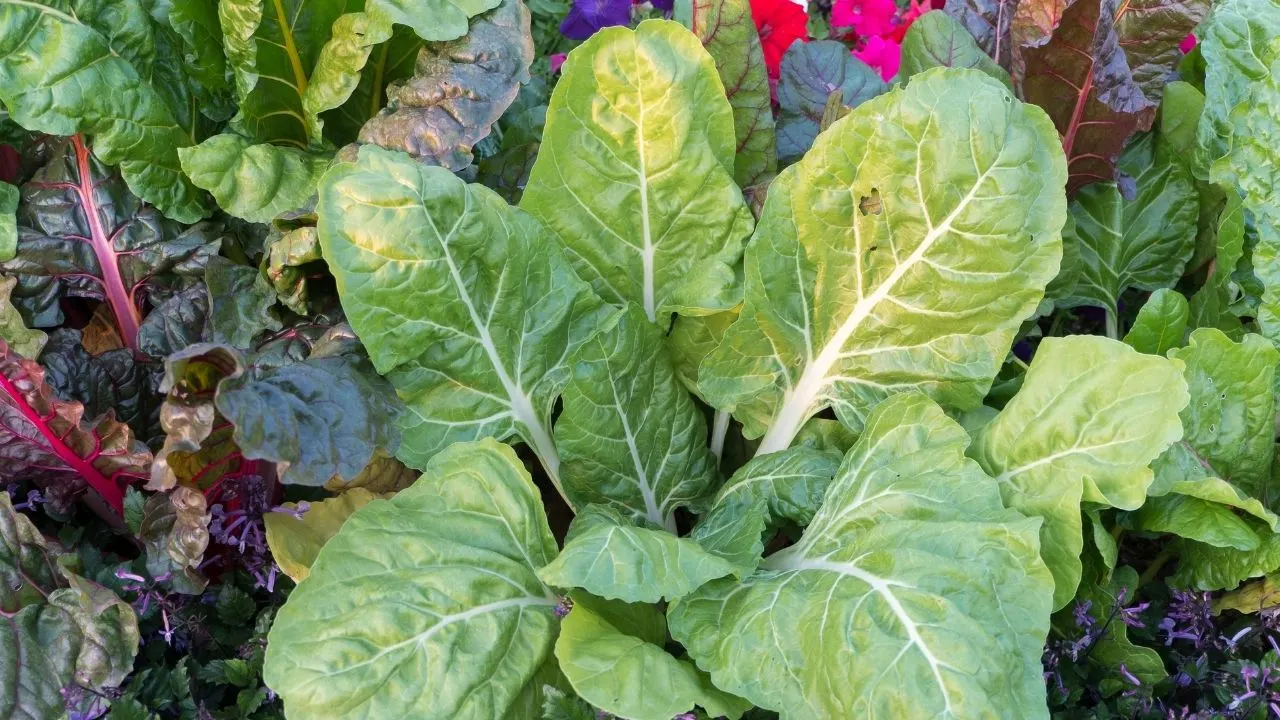
Chard does not receive as much credit as it deserves in terms of being an excellent hydroponic vegetable.
You can not only cultivate chard hydroponically with extreme ease; it is as fit for this condition as the likes of lettuce!
Well, to be fair, most leafy greens are ideally suited for hydroponic cultivation. I think it isn’t very popular with the masses yet, but any chard lover out there would know how delicious this vegetable is!
The perfect acidity-basicity balance you are looking for in the case of chard hydroponics would be somewhere in the bracket of pH 6.2 to pH 7. So, ideally, a somewhat neutral environment would work great!
Just be careful to maintain cool growing conditions, and give the crop adequate breathing space. I would suggest that you leave at least four inches of space between two consecutive seeds to ensure that the plants don’t end up shading each other!
15. Spring onions
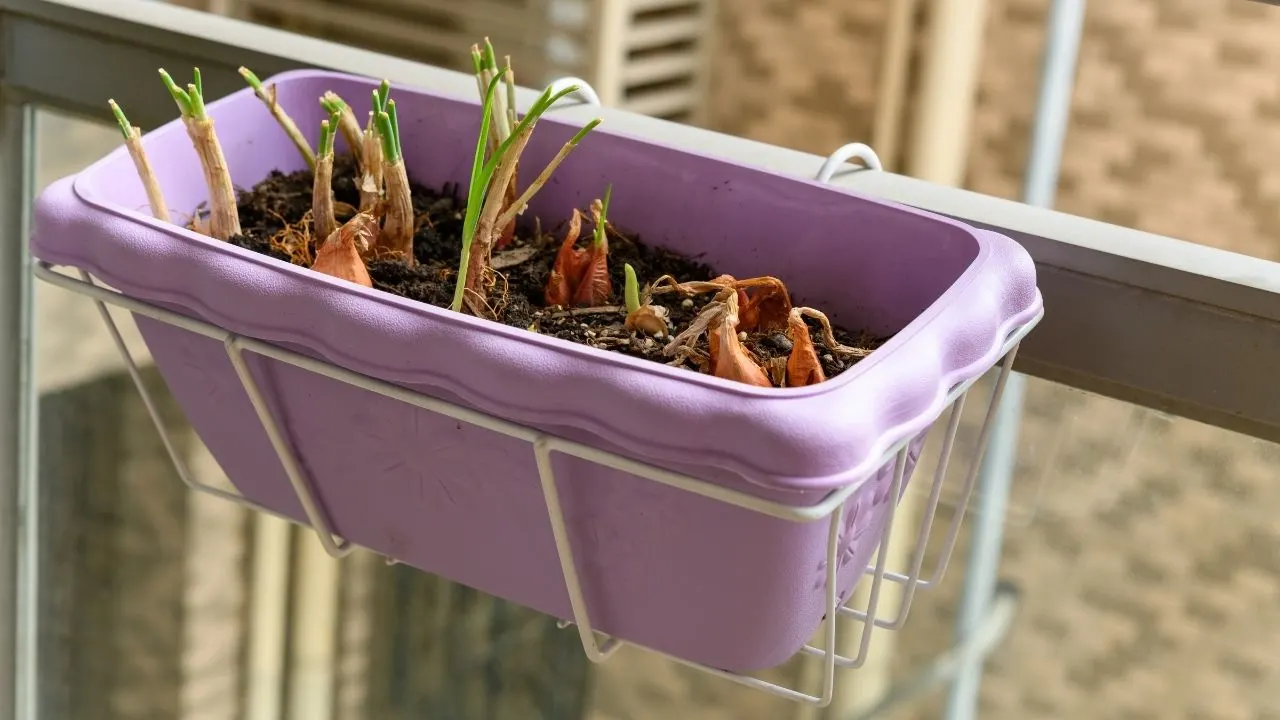
Spring onions are very common ingredients in several everyday dishes. They are nothing but very young and tender onions.
The difference is that in regular onions, you let the bulb grow, but when it comes to spring onions, you harvest them before the bulb matures completely.
Spring onions typically have a swift growth rate, so once planted; you will see quick development. But for that, a 6 to 6.5 pH level must be maintained.
A steady temperature of about 65 to 70 degrees Fahrenheit (15 to 24 degrees Celsius) would be perfect for the growth and development of hydroponically cultured spring onions.
Once these preconditions are met, you will be all set!
Spring onions will germinate between six and eight days approximately. Typically, they should be ready for harvest within 80-95 days since sowing!
Conclusion
Vegetables from the market are exposed to hybridization and whatnot, and their nutritional value is often compromised in the process.
Hydroponically growing your vegetables at home will give you the option of monitoring the goodness you receive from your food from my experience.
Besides, hydroponics as a culture method is gaining more and more traction now that its benefits are being researched further.
I’m a firm believer in the idea that all plants can be self-reliant to a great extent, and what they really need from you is love and care. I’m sure that you will quite literally reap the harvest of all the love you have shown!

Daniel has been a plant enthusiast for over 20 years. He owns hundreds of houseplants and prepares for the chili growing seasons yearly with great anticipation. His favorite plants are plant species in the Araceae family, such as Monstera, Philodendron, and Anthurium. He also loves gardening and is growing hot peppers, tomatoes, and many more vegetables.


